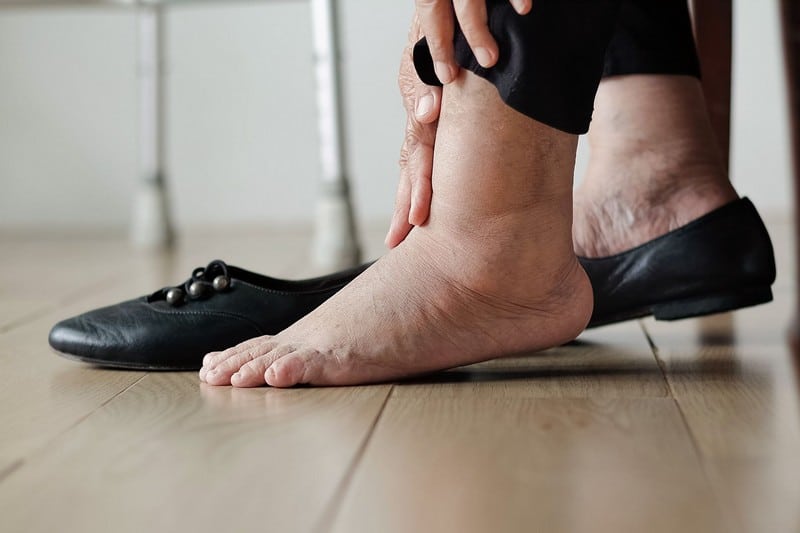Swelling

Signs of a fatty liver include water retention and joint pain. Nonalcoholic steatohepatitis, or NAFLD, results from steatosis progressing to liver inflammation and cell destruction. Although those with NAFLD still have a functioning liver, if the condition isn’t managed, it may cause irreversible scarring and cirrhosis.
The fatty liver disease worsens with time for between 7 and 30 percent of those diagnosed with it. The process has three phases. Because of the inflammation, the liver’s tissue is damaged in the first stage, termed steatohepatitis. The second stage is characterized by scar tissue, known as fibrosis, where the healthy tissue is mostly replaced by extensive scar tissue. Liver cirrhosis will develop at the last stage of NAFLD.
NAFLD is a “silent killer” because it is almost asymptomatic until the patient approaches the cirrhosis stage, where more visible symptoms occur, such as swelling. The increased pressure in the enlarged portal vein that brings the liver’s blood from the spleen and intestines also causes the liver to enlarge, as well as fluid retention in the legs and abdomen.
Over time, this may lead to edema, which manifests as a generalized swelling, mostly on the lower extremity. Meanwhile, ascites is the term used for the fluid accumulation in the abdominal cavity.










